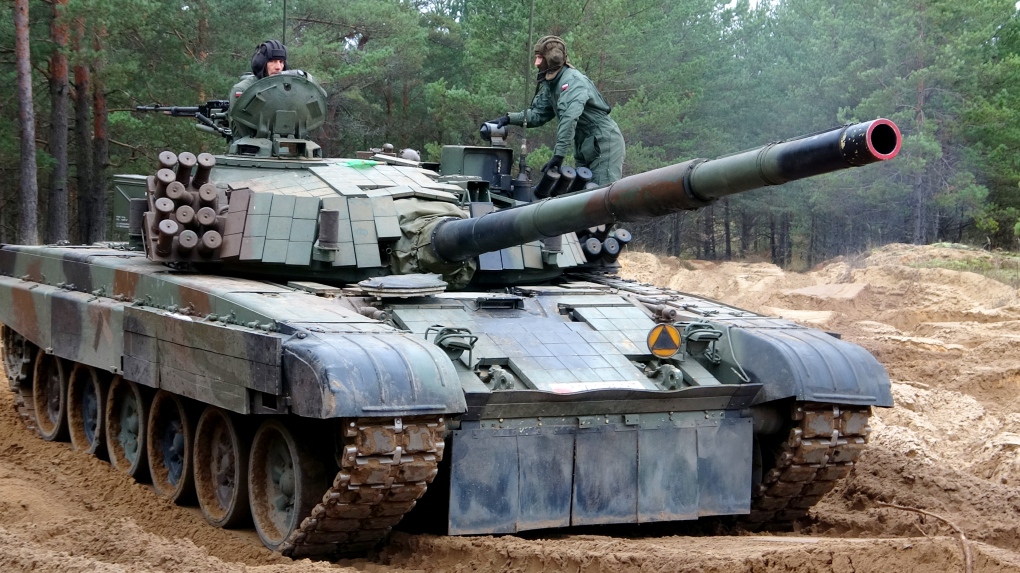NATO organizes competition for armored guns in Latvia
Riga, Latvia –
Although tanks have shown their limits in the war in Ukraine, they remain the centerpiece of the battlefield, Italian Armed Forces Captain Antonio Cornacchi told The Canadian Press on Thursday.
Cornacchi is responsible for the armored artillery competition involving troops from 13 NATO countries, including Canada, which takes place over four days at the Adazi base, located approximately 200 kilometers from the Russian border and 45 minutes drive from Riga. , the capital of Latvia, a NATO member.
The military drills – dubbed Iron Spear – involve NATO’s multinational battle group eFP Latvia, which serves as both a deterrent and a shield in the event of an attack.
Thirty-four crews from 13 NATO armies test the tanks’ punch and maneuverability, as a debate rages over the suitability of armored vehicles, following the setbacks suffered by Russian tank units during the invasion of Ukraine.
Cornacchi said the tanks are “very competitive” in exercises involving firing on the move or from fixed positions.
“Light infantry is also important for our army, but tanks remain the focus,” Cornacchi, commander of an Italian combat company, said in an interview.
On Thursday, NATO crews competed for who had the most accurate tank fire across a square mile field of mounds and paths. Firing from tank guns over 100 millimeters produced deafening explosions in an observation bunker where a jury – made up of Italians and representatives from other NATO countries – judged the drills.
The jury is there to “test the ability of each crew in a highly professional manner”, said Cornacchi. So far during the competition, he added, the Estonian, Danish and Canadian soldiers are “doing very well”. But he said there was more competition to be had.
“This is just the first step, and we’ll see what happens.”
British and Polish soldiers maneuvered around the perimeter on Thursday morning and fired shots, some while moving and others from fixed positions. Members of other NATO countries watched their colleagues from the roof of the bunker, braving the damp, biting cold.
The Canadian unit competed with its German-made Leopard tanks, a design that the Canadian Forces used during the war in Afghanistan.
Meanwhile, in Ukraine, tank combat is common, but new weapons threaten tank supremacy on the battlefield, including drones and an arsenal of anti-tank missiles supplied by Ukraine’s Western allies. Among the weapons is the Javelin, which has become a symbol of the Ukrainian war, a formidable American-made anti-tank missile. Javelins are small, easy to use, and they wreak havoc on Russian tank units.
The Ukrainian army has published several videos of Russian tank turrets exploding in the air like champagne bottle corks, the impact of Javelins and other anti-tank missiles: Nlaw, Himars or Carl Gustavs. Canada, for its part, donated 100 M2 Carl Gustavs to the Ukrainian forces.
Just over 100 years after its invention, this heavy, expensive and cumbersome tank – highly visible and sometimes vulnerable on the battlefield – still plays a vital role in NATO’s defense arsenal.
This report from The Canadian Press was first published on November 18, 2022.
Patrice Bergeron is a Quebec journalist with The Canadian Press. In addition to more than two decades of experience in political and general news, he served as CP’s war correspondent in Afghanistan in 2009.


Comments are closed.